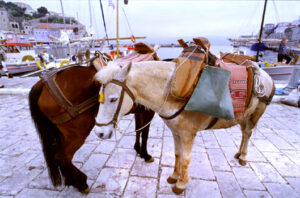Geographical & Historical Outline of Hydra
Hydra is an island in the Saronic Gulf with an area of 52 square kilometers and 56 kilometers of coastline.
It lies directly opposite the town of Ermioni on the Peloponnesian coast.
It is a completely barren, rocky island, in contrast with the other Argosaronic islands, which are covered with dense vegetation and have fertile soil.
The landscape here is very austere, but this gives the island its special character and a rare charm, which attract great numbers of visitors. Its highest peak is Eros (592 meters.)
The climate is Mediterranean, dry and mild.
Hydra is one of the most cosmopolitan of the Greek islands and has very high quality accommodation, luxury shops, restaurants, places of entertainment, facilities for water sports and a lively night life.
Geographical & Historical Outline of Hydra
In ancient times the island was called Hydrea and was a subject first of Mycenae and then of Hermione.
It flourished greatly during the Byzantine period, but the most glorious pages in its history are those relating to modern times.
During the period of Turkish domination, the people of Hydra were granted a system self-government and exemption from taxes.
From the 17th to the 18th c., they succeeded in creating a strong merchant fleet and monopolized trade in the Mediterranean during the Napoleonic Wars.
This brought them great wealth and they were able to increase their naval power several fold.
At the beginning of the Greek War of independence of 1821 the sea-captains of Hydra made their ships available for the Greek War of Independence, in which many of them gave their lives.
Important was the help of Hydra to the liberation of Greece in 1821. During the war Hydra had got 130 battleships of 30.000 ton each, 5.400 soldiers and 2.400 cannons.
Today, Hydra retains its naval tradition and the memories of its glorious past.


